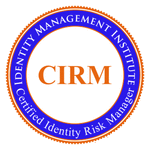|
New Hire Identity
How do we know a new hire identity is valid, complete and accurate? How do we know that the new hire who presents a passport to prove his citizenship and right to employment is presenting a valid identifier? I’m sure we’re all familiar with general new hire procedures which may include professional and personal reference checks, resume validation, criminal investigation, drug tests, credit check, as well as residency and citizenship verification. The problem facing companies during the new hire identity verification in two fold; first, the job applicant may not be who he or she claims to be, and second, the new employee information may not be complete and/or accurate. When an applicant applies for a job and is being considered for hire and presents a passport to prove his right to employment, how do we know that the passport is a valid document which includes complete and accurate information such as name, picture, date of birth and other information applicable to the new hire identity? You probably read this news article about a little boy who was killed at the age of three and whose identity was stolen thirty years later by an illegal resident to apply for a US passport and secure a job as an investigator at the Oregon Liquor Commission. This practice of praying on unsuspecting identities can be abused to secure passports and other pieces of IDs which can then be used to get jobs, open new accounts, buy stuff on credit, or even get married. If a person has stolen and maintained an assumed identity for a long time, it becomes difficult to detect identity theft since all friends, institutions and maybe even family members recognize him as the person he claims to be without knowing or doubting it. Let’s assume someone stole an active identity years ago by taking over a dead person’s identity of about his own age. This is fairly easy to do especially if death was not properly reported and no one is really monitoring the dead person’s identity. Then the identity thief uses his new name, social security number, and date of birth to get a State ID card, enroll in a college, get financial aid, apply for credit cards, buy a house, apply for a passport, travel the world, get married, nurture friendships, and have children. When the person applies for a new job, how can a company validate his identity with all the background checks when his new identity is so embedded in his entire life? The answer is reverse background check. First of all, requesting as many pieces of identification from the new hire identity will only confirm and validate the “assumed” identity although requiring more ID components will make identity crime more difficult. When an assumed identity is so embedded in an identity thief’s life, reverse background check is necessary to validate his identity. Information obtained from his various background reports can be traced back in time to detect gaps. For example, if a person dies at age 3 and his identity is stolen 20 years later, what happens to the events in the dead person’s life between the ages of 3 and 20? In other words, the high school attendance gap which is considered a normal event for that period or other relevant events not reported in the employment application can be detected through reverse background check which might further make the person's identity questionable. Therefore to validate a new hire identity and confirm completeness and accuracy of employment applications, many techniques should be considered including forward and backward background checks. Return to workplace information protection after "new hire identity". |